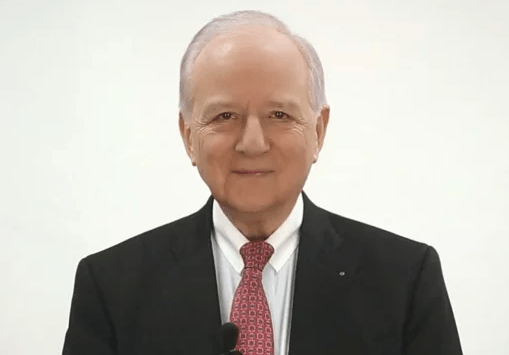Heidi Lehner – about Growth
As executive director of the Sunflower Foundation I’m often asked why we chose the sunflower as our symbol, who’s behind the foundation and why we promote local trading exchanges.
What we can learn from the sunflower

Now, a sunflower doesn’t just have a radiant form; it has also been known to bring a glow to the people who look at it. The sunflower embodies growth of a very special kind: growth characterized by balance, harmony and uniqueness. The Sunflower Foundation endeavors to reflect these qualities in its programs and partnerships. Fibonacci described the mathematical principles of this growth dynamic over 800 years ago, which can also be seen in the proportions of the golden section and the pentagram.
This growth is not about bigger or more. Rather, like the sunflower, it’s a fluid kind of development that maintains its proportions, in tune with its context. It is organic, following no rigid program or pattern. It evolves, step by step, the last stage determining the next, always in harmony with its environment. It is precisely there – in the zone where two different forces meet – that a kind of tension arises. And it is there where it’s decided whether something collapses or loses itself in infinity – or finds the stability to develop further. We find this governing principle at work everywhere, in nature and in ourselves. So much for the sunflower as the symbol of the Sunflower Foundation.
As the sunflower rises from its roots, we are often shaped our ancestors. Verena and Conrad Conzett surely influenced their great grandson, Jürg Conzett, the founder of the Sunflower Foundation.

Verena Conzett
Besides growth, as epitomized by the sunflower, some other terms, like self-confidence, self-esteem and regard for others, are watchwords of the Sunflower Foundation. But one ingredient would still be missing, Verena would surely say: perseverance. Without it, nothing happens. Verena learned this truth from hard experience. Born to a modest worker’s family in Zürich, she left school after the sixth grade to work as a laborer in a spinning factory. Later, through her husband Conrad, she came in contact with the nascent labor movement at the turn of the 20th century and soon became a leading voice of her era on behalf of female factory workers in Switzerland.
Conrad Conzett was a passionate idealist. He grew up in Chur, Switzerland, and already as a young printer emigrated first to Leipzig and then to America. By the time he returned to Switzerland he was an accomplished editor and the publisher of several magazines. Soon he would become one of the strategic leaders of the Social Democratic political faction and the emerging labor union movement, too.
But back to the subject of perseverance, that’s what Verena Conzett needed after the early and unexpected death of her husband. After years of excessive physical and psychological stress, Conrad suffered from what today would be called a severe burnout. A broken deal tragically pushed him over the edge and he took his own life at the age of 48. And there Verena stood, widowed, with two sons and a debt-ridden printing business. Undaunted, she took up to the challenge and fought ten years until the business finally flourished.

The great-grandson
Two generations later, in the year Verena died, Jürg Conzett was born into economic and social circumstances quite different from those of his grandmother. His family was well off and he already asked himself as a youngster what did that have to do with him when others said he was one of the fat cats.
He observed early in life that wealth often made people profoundly unhappy. It shackled rather than liberated them. He studied history and psychology at university and his dissertation focused on the question that would be at the center of his professional life: how can we escape the traps and snares that money sets for all of us, rich and poor alike, and interact with money in ways that reflect our inner convictions, not just social expectations and economic pressures.
This challenge has accompanied him throughout his career, first as a financial analyst at a bank and later as an independent investment advisor, and finally as the founder of the Sunflower Foundation. His explorations have involved a wide range of expert collaborators, resulting in scores of historical exhibitions, publications and events at the MoneyMuseum, public panel discussions and lectures at the MoneyForum, and a wide range of innovative projects under the umbrella of the MoneyLab. All this has been done as a service for individuals and society as a whole.
The local exchange "Tauschen am Fluss"
And that’s why the Sunflower Foundation supports local exchange trading systems. What do I enjoy doing? What do I do well? Who might be interested in my skills? These are the questions people ask when they want to trade. The answers reflect their self-knowledge, self-esteem and their regard for others.
In a local exchange trading system, people with diverse skills exchange goods and services with each other. All share the belief that each of the various services is equally important and equally valuable. This egalitarian basis gives the relationships formed at the exchange a special quality. Through this kind of exchange, fruitful relationships develop between individual members and throughout the entire network.
Local exchange trading systems provide a platform that allows participants to be part of a group without giving up their individuality, and maybe even to grow a little bit. According to neurobiologist Gerald Hüther, that kind of environment is essential for a healthy and meaningful life.
And that, after all, is precisely in tune with the Sunflower Foundation’s core philosophy that embraces change, growth and cooperation.